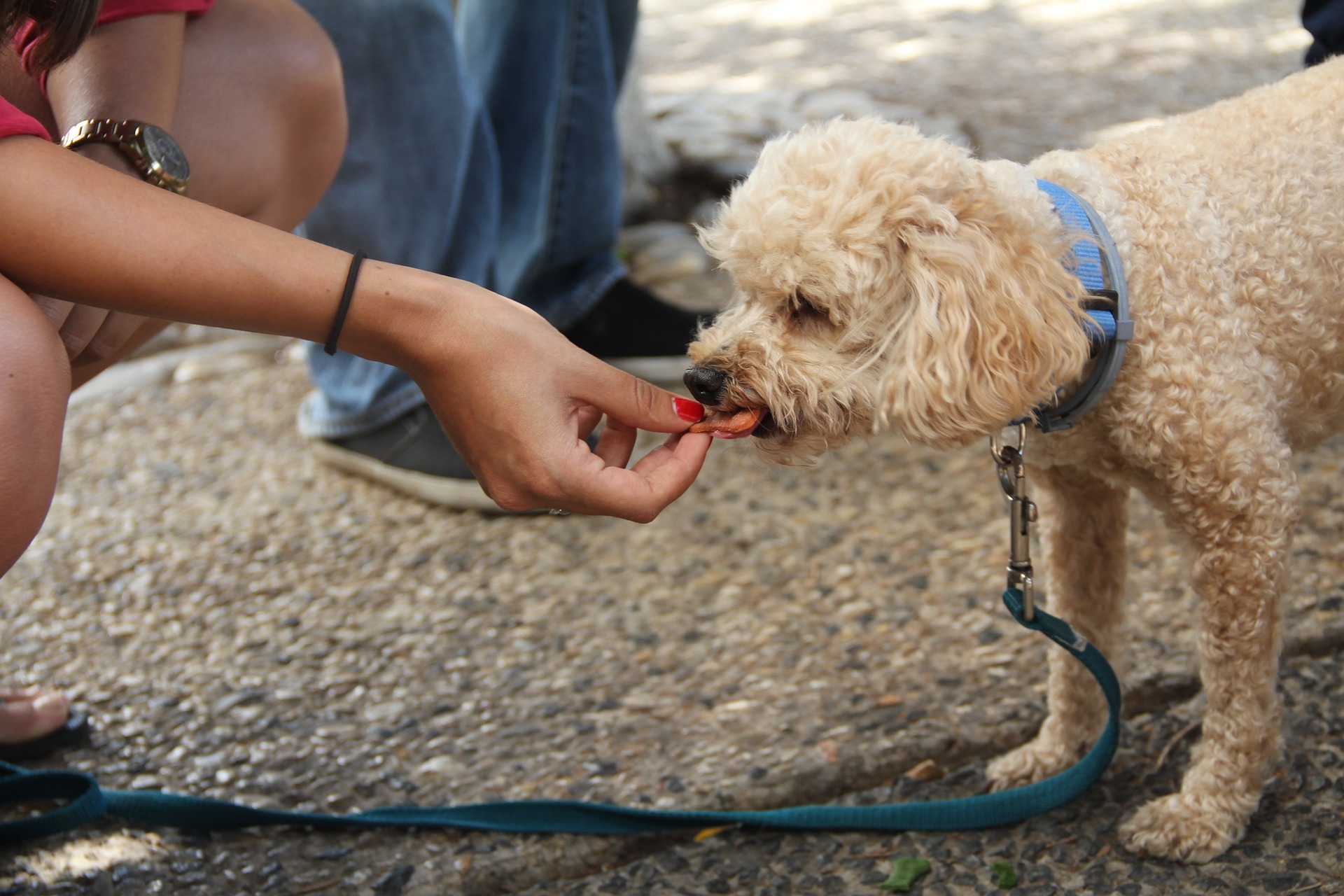Training is a necessary part of your dog’s daily routine as well as yours, and it’s no secret that training treats are the main lure and reward used when teaching or reinforcing behaviors. Properly rewarding your dog is important; however, it’s also crucial that you are not over-feeding your pup in the process or lessening the worth of the treats in their eyes.

Food is used in training to reinforce desired behaviors. It is not meant to be used as a bribe–where the dog refuses to respond to your command until you present them with a treat– but rather as a reward. Each time you give your dog a treat for something like sitting or rolling over, it’s more likely they will willingly do it the next time you ask.
What Training Treats to Use
Treats doled out during training should be enticing enough for your pup to want to listen, especially for difficult behaviors like immediately stopping and returning to you during a recall. You might be tempted to use pieces of chicken or cheese. However, most dogs will happily perform for a piece of kibble, which is easier to store and lower in calories. If you are constantly using high-calorie treats for all your training, you’ll likely notice rapid weight gain in your pup.
When choosing your training treats, find something your pup loves that is not super dense or high-calorie. This could be chopped up veggies, frozen blueberries, or treats specifically marketed as “training treats”. Soft chewables may be best, so that your dog doesn’t get distracted from training as they might with a super crunchy treat.
To avoid over-feeding, coordinate with your vet to calculate the amount of calories your dog should eat in a day to maintain a healthy weight. Use this number to figure out how much they should get in each meal, including a daily treat allotment. Alternatively, take a few kibbles out of each meal before you give it to your dog and put them in your training treat bag. This way, the calories in your pup’s treats are already accounted for in their daily diet.
Weaning Them Off Treats
Training treats are meant to be used as a lure when introducing a new behavior, and to help reinforce a learned behavior so that your dog continues to perform it well. Once they have the hang of whatever trick or command you’re working on, you can then begin weaning them off of their training treats.
The goal for weaning your dog off of treats is not to never provide a reward again; it’s just to show them that you have higher expectations for their performance before they are rewarded. For example, when training your dog to walk in the heel position, you’ll initially provide a treat whenever they assume the position, are walking without pulling on the leash, and are looking to you for cues on where to go. As you begin weaning, you may acknowledge that they’ve done the correct behavior with a click or by saying “good” but will not offer a treat every time. Start by giving them a treat every other time they do the behavior, then increase it to every third or fourth time. They’ll learn that a treat will eventually be given to them, so long as they continue doing what you ask!




